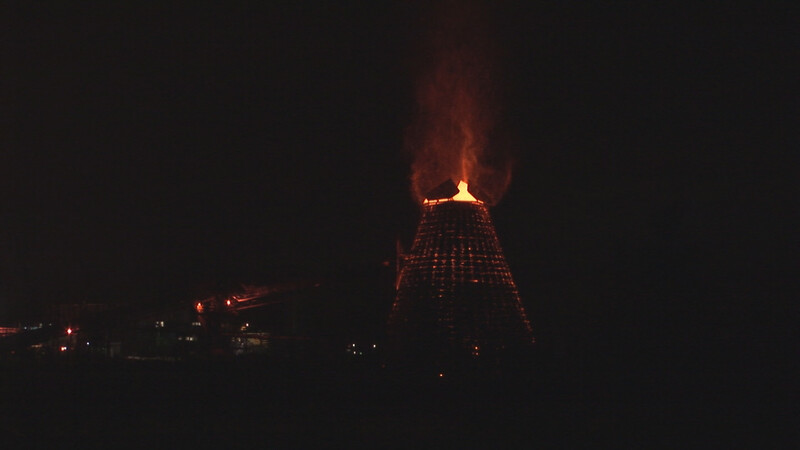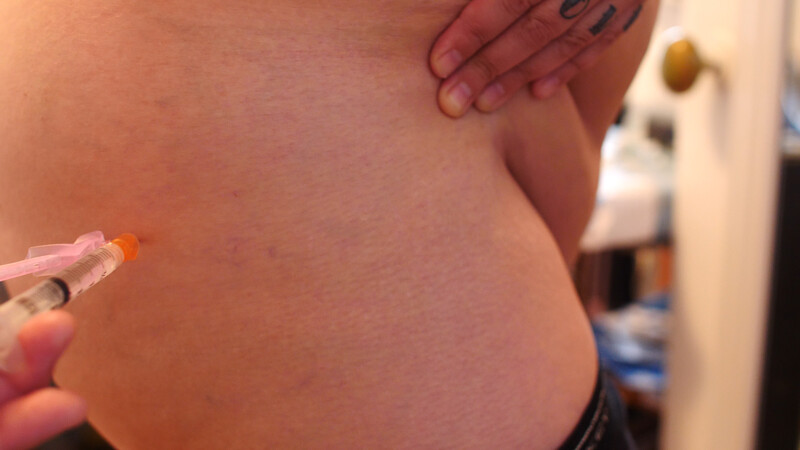- 06.0Cover
- 06.1Whose Woods These AreZackery Hobler
- 06.2How to Read this Broadsheet
- 06.3An Open Letter to Extinction RebellionWretched of the Earth
- 06.4Forging the Land on PaperBonnie Devine
- 06.5Rag CosmologyErin Robinsong
- 06.6Golden FuturesOrit Halpern
- 06.7for the watersAlize Zorlutuna
- 06.8The Collective Afterlife of ThingsSarah Pereux, John Paul Ricco
- 06.9Closing the Carbon Loop with Artificial PhotosynthesisPhil De Luna
- 06.10A Dictionary for the Future PresentThe Bureau of Linguistical Reality
- 06.11ExtractionsThirza Cuthand
- 06.12To Be RepairedJoy Xiang
- 06.13Demon Copper
Michael DiRisio
- 06.14What is Value?D.T. Cochrane
- 06.15The Blue Dot MovementCiara Weber
- 06.16Local Useful Knowledge: Resources, Research, Initiatives
- 06.17Glossary
Extractions
- Thirza Cuthand

This text originates in a performance I made in April 2019. In this work, I disrobe and pour molasses over my body while video is projected behind me of stock footage from extractive industries, including strip mining, pipeline construction, uranium mining, burning of lumber by-products, etc. Halfway through I begin to clean the molasses off my body with baby wipes while images of assisted reproduction are projected.
Against a backdrop of stock footage of extractive industries, I stand against the culture of anti-Indigenous misogyny that goes with them—including “man camps” of pipeline construction workers that endanger Indigenous women, girls, and 2SLGBTQ people,11Women’s Earth Alliance and Native Youth Sexual Health Network, Violence on the Land, Violence on our Bodies: Building an Indigenous Response to Environmental Violence, 2016, http://landbodydefense.org/uploads/files/VLVBReportToolkit2016.pdf. rapist security companies who enact continued cruelty here and abroad,22Jonathan Watts, “Murder, Rape and Claims of Contamination at a Tanzanian Goldmine,” The Guardian, 18 June 2019, https://www.theguardian.com/environment/2019/jun/18/murder-rape-claims-of-contamination-tanzanian-goldmine. and the everyday violence of living under a government that supports extractive industries and their assault on Indigenous lands.
I don’t really have solutions, but I know we lived on this land and nurtured Indigenous systems of management for many thousands of years before colonization. How do we make space, imagine, and create Indigenous and queer futures from this moment of crisis? I sometimes feel hopeful that maybe everything will collapse and we will go back to these old ways of being, like my blood memory will remember how to survive in tough times.
When I lived in Merritt—one of the roughest, most racist, most homophobic, and transphobic redneck towns in BC—there was a large logging industry that kept the town going. There’s really only snapshots I have of that place, only brief memories. Like how the boys in Junior High kept cans and cans of chewing tobacco in their lockers. Like climbing the mountain on weekends for something to do. Like this huge thing that burned in the night.
The huge thing was metal, like a cone. They called it a Beehive Burner, and it was filled with waste wood like chips, sawdust, and small pieces they had no use for. And at least once a week when it was full they would burn it all. It would glow red in the night like the most malevolent force—like something in a Disney cartoon that signified death and anguish. That town gave me so much trauma as an Indigiqueer kid who didn’t even know I was queer yet. The Beehive Burner became a kind of shorthand for the ignorant evil that lived in those other teenagers. Those logging, ranching, tobacco-chewing teenagers who hated queers and NDNs.
Extractive industries don’t just sculpt our landscapes, they touch our entire society and dictate how we treat each other based on social status, race, proximity to privilege or to resource-rich areas of land. There’s uranium up in northern Saskatchewan, the province where I lived most of my life. I’ve heard rumours that trucks on Saskatchewan highways are transporting radioactive materials without any signs on them warning us. I used to work in a call centre doing market research for various corporations—they never told us exactly who the surveys were for, but I think one was for the big uranium mining company, Cameco. A respondent once told me he’d seen moose standing in uranium tailings ponds up north, which totally disturbed me.

At the same time as I have been coming to terms with the fact that we are all complicit in resource extraction, war profiteering, and land theft, I’m trying to make a baby.
Indigenous kids are treated as a resource in Canada—how we value that resource tells us who is interested in caring for Indigenous life, and who considers Indigenous kids a mechanism for siphoning off money into white pockets. Indigenous communities are advocating for the protection of kids, by keeping them with their birth families, securing access to clean water, safe housing and healthy food, and connecting them with the traditions their families have practiced. But at the same time Indigenous kids are being extracted from loving Indigenous parents just like the gold and the diamonds and the oil. Foster parents make more money caring for kids than is given to Indigenous parents.33Brielle Morgan, Katie Hyslop, Cherise Seucharan, and Tracy Sherlock, “What If We Gave Struggling Families as Much Support as Foster Parents?” The Tyee, 6 June 2019, https://thetyee.ca/News/2019/06/06/Struggling-Families-Foster-Parents. Poverty is always a good excuse to take our kids, and all kinds of systemic issues set parents up to fail in the eyes of the law. The system that rewards foster parents with big money while refusing to support families before their kids are removed sickens me. It sickens me that pain and trauma are commodified like that, in the name of “care”—that Indigenous children are treated the same way as the oil, uranium, diamonds, trees, potash, and all the other resources that allow for settler Canada to exist.
In the midst of all this, I did a round of fertility drugs and had ten eggs retrieved in a fertility clinic to try and fertilize in the future. I picked out a donor I trust and like. It would suck if I spent all this money trying to make a baby only to have Child and Family Services come and take it. And then part of me wonders if the apathetic people are right? The ones who say it’s useless having kids now, we’re all gonna die anyway, this world’s gonna die, we’re at the end.
But maybe that’s what those who benefit from this extractive system want us to believe: that this is the end of hope and life and love. That there’s no more future for the humans. For the Indigenous people. Maybe that’s just a ruse so they can suck out every last drop of blood that this planet has, instead of genuinely finding a way to turn it around. Maybe not having babies any more makes it easier to give up, because if you don’t have people, who needs the future to be okay? Then you won’t have to worry so hard. You can just sit in air conditioning and watch Netflix until the power runs out.
I don’t know. I don’t have the answers. I just have ten eggs in a freezer and some nervy feelings about making sure there are still Indigenous people after I die.
See Connections ⤴